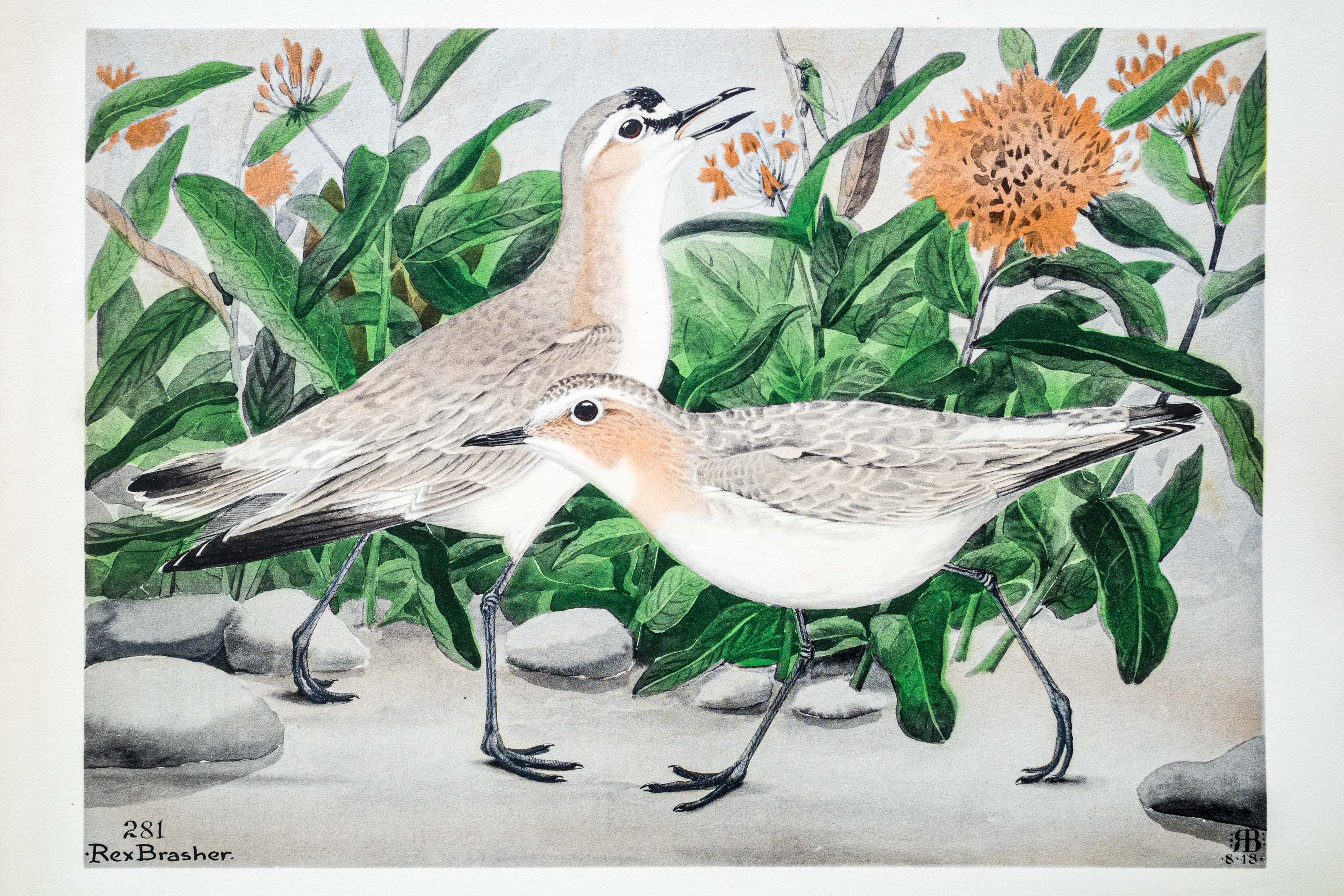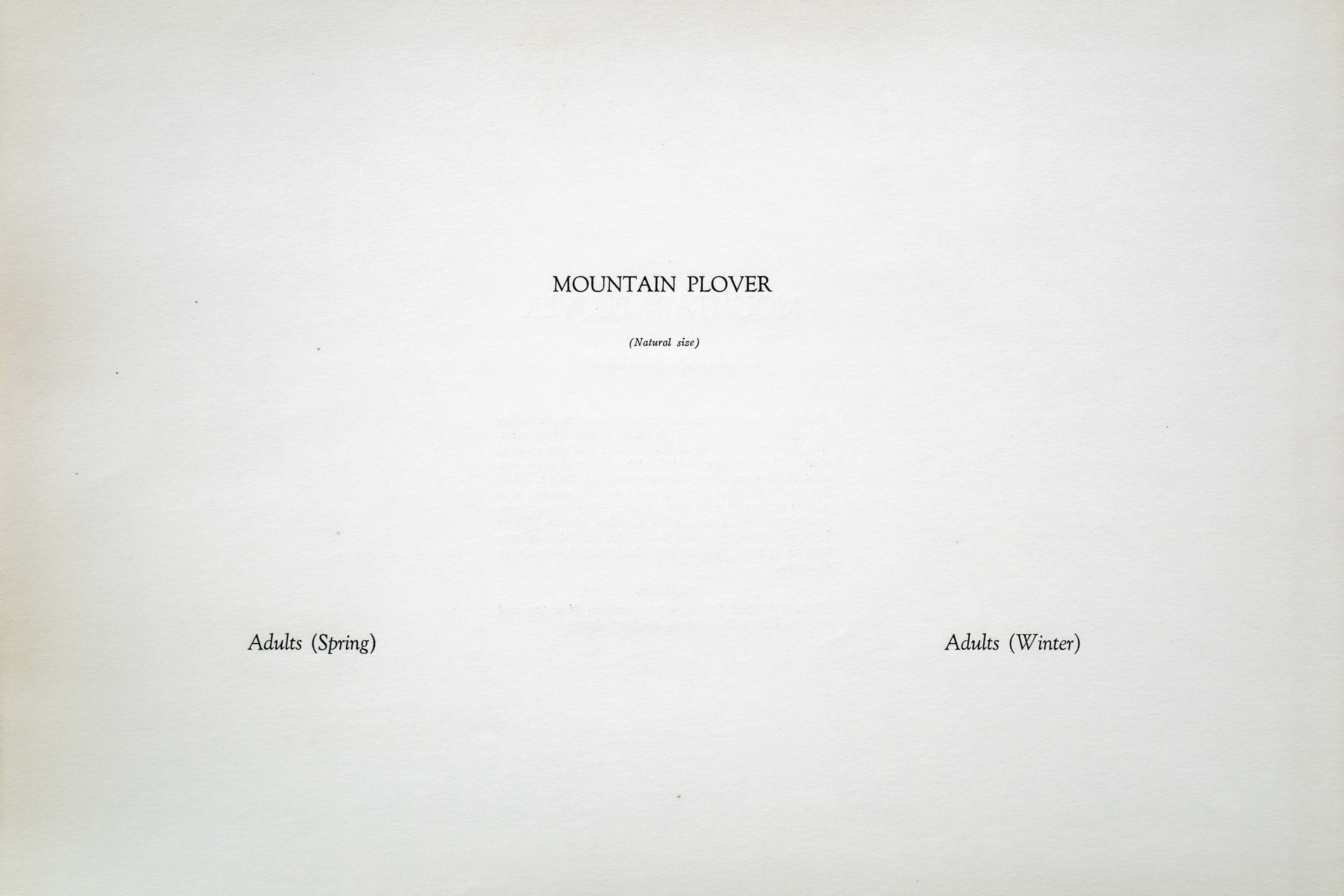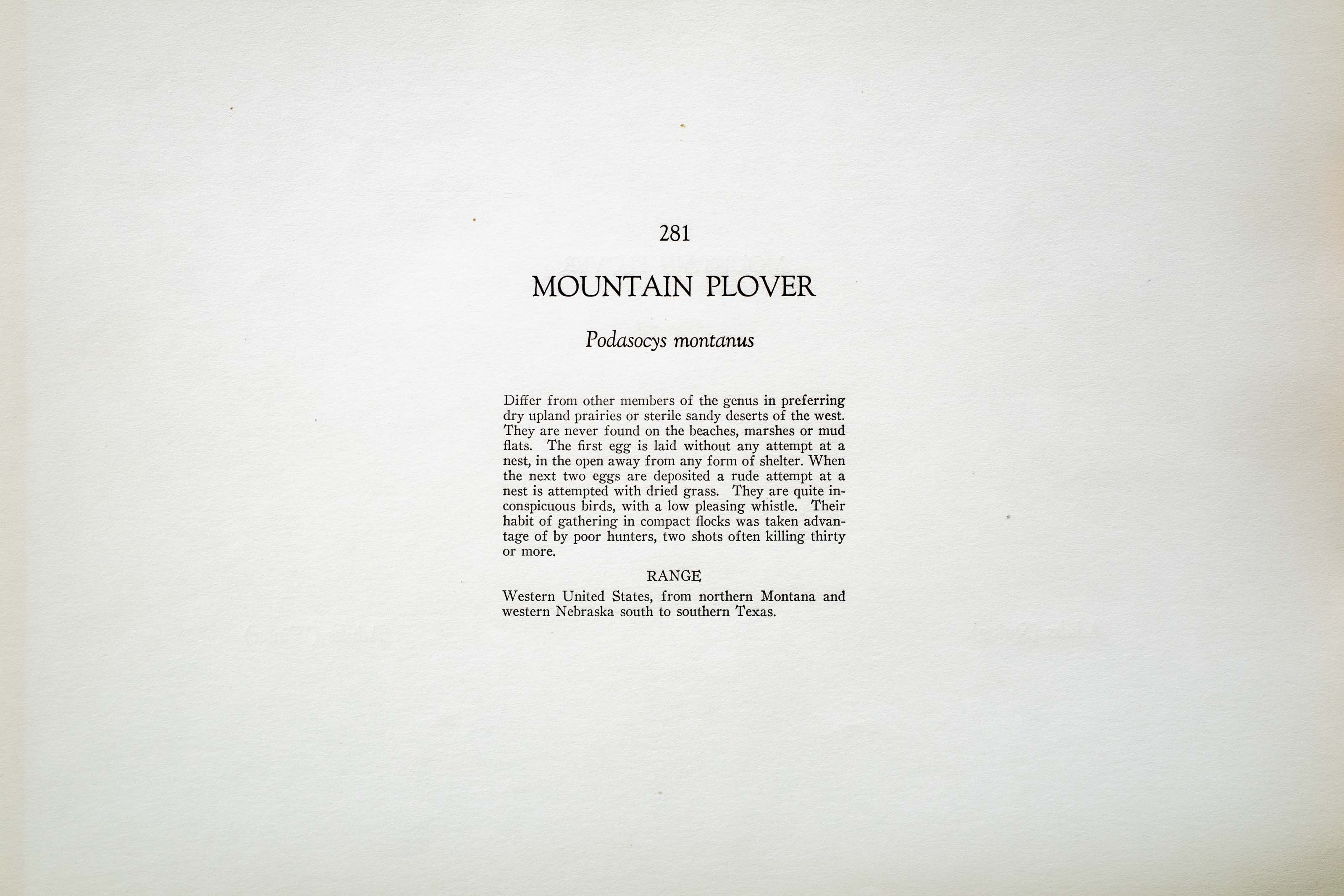






Unknown
1930
4
281
A team of dedicated board members, volunteers, and student interns has published every page in Volume 9. This volume includes 360 images of paintings and lyrical descriptions of birds, now available online for everyone to enjoy anywhere in the world. This is a monumental task. Each volume requires approximately 400 hours to photograph, edit, transcribe, catalog, and publish online. We need your support to complete this work.
If you're tech-savvy, have a good eye, are meticulous with details, and love structured data, please consider volunteering by emailing us at hello@rexbrasher.org.
We encourage all bird lovers and supporters to consider a monetary donation to support our mission to make Rex's work available for everyone. You can provide a one-time or recurring donation online.
Differ from other members of the genus in preferring dry upland prairies or sterile sandy deserts of the west. They are never found on the beaches, marshes or mud flats. The first egg is laid without any attempt at a nest, in the open away from any form of shelter. When the next two eggs are deposited a rude attempt at a nest is attempted with dried grass. They are quite inconspicuous birds, with a low pleasing whistle. Their habit of gathering in compact flocks was taken advantage of by poor hunters, two shots often killing thirty or more.
Western United States, from northern Montana and western Nebraska south to southern Texas.